Pitfalls and difficulties that you need to know when installing water heating in a private house
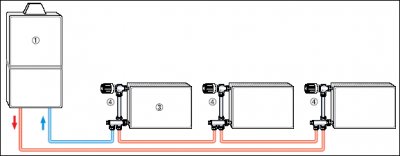
Eurasian winters are quite harsh. To keep warm and feel comfortable, you can't get by with a fireplace or a stove.
The most common option is - water heating.
Water heating in a private house
The heating structure consists of the following parts:
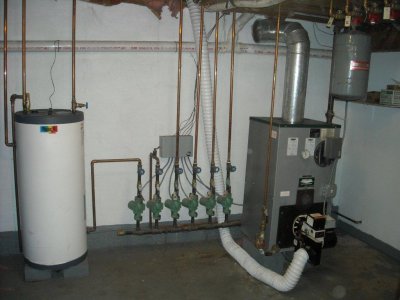
- boiler;
- water circuit;
- radiators;
- convectors;
- underfloor heating pipeline;
- locking mechanism;
- adjustment devices;
- bypasses;
- pumps.
If there is a gas source nearby, it is most reasonable to install gas boiler.
When a cottage is located far from utilities and is large in size, it is necessary to install gas holder.
Operating principle
The water is heated in the heat exchanger, then rushes through the pipe into the room. The heat from the radiators is carried through the air, warming the rooms. Then the water cools and flows back into the heater. The liquid goes natural course (gravity circulation), or it drives her pump (forced). The equipment is controlled by temperature sensors and thermostats.
Fuel
Water is heated using:
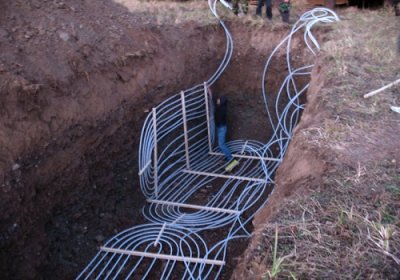
- geothermal energy;
- coke;
- domestic gas;
- electric current;
- wood;
- technical kerosene;
- solar energy.
The cheapest and most accessible raw material is considered to be gas, but is also used electricityResidents of country houses love this type of fuel for its noiselessness and availability.
The most economical there are boilers that operate on combustion coke or wood. This type of fuel is also quite common in Russia and is distinguished by its affordable price; even people with a low budget can afford it.
Technical kerosene is used less frequently because of its increased danger. According to sanitary standards, such fuel is stored in the ground in a special container.
Sunny Heating is less common. It includes:
- solar collector;
- tank;
- control system;
- pumps.
This type of heating is absolutely safe, is not afraid of lightning, overheating, hurricanes. It is installed by special order.
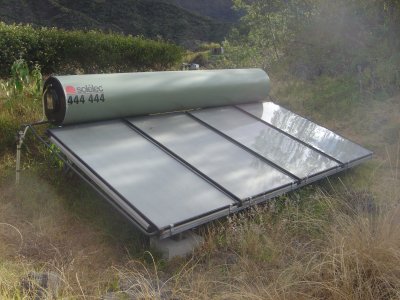
There is a collector flat And tubular. The first is an insulated heat exchanger where the water is heated up to 90 °C. The rays, passing through the glass barrier, are absorbed by the black bottom, and then heat the water through the coil.
The tubular vacuum heat exchanger is not so popular because quite high cost, but they are considered the most effective, since they work well even in the cold season.
Connected to glass pipes. Cold coolant enters the pipe through the central channel, is heated by solar heat and returns to the system.
Geothermal energy is used as fuel less often. There are almost no heating costs, but the installation will be quite expensive, but it pays for itself already in 4-5 years. This system is the easiest to maintain, does not require a tank or electricity, and does not pollute the environment.
System maintenance requires a lot of physical effort. In addition, a special room is needed to store the fuel. This option is preferable for houses located far from utilities, where there is no electricity or gas.
Advantages and disadvantages
Advantages of water heating:
- low cost and wide availability;
- high thermal conductivity (absorbs four thousand times more heat than air);
- no need add water;
- there is a possibility clean the coolant from harmful impurities and thus protect the pipes;
- opportunity temperature regulation in a separate room;
- silent Job.
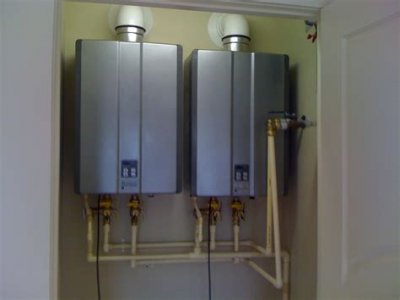
The water heating system is completely safe and does not disperse dust around the house, unlike an air heater.
Cons:
- presence aggressive impurities in water puts pipes at risk;
- education scale and sediment, which significantly reduces heat transfer;
- water can sometimes freeze, the pipe will inevitably burst.
The latter can be avoided: it is enough to add to the coolant antifreeze or brine.
True, such chemicals are not affordable for everyone. If the owner is leaving for a long time, it is better to drain the water, otherwise it will certainly freeze and burst the pipe.
Installation water system is complex and requires the work of a specialist. But with certain skills, you can do it yourself.
Schemes
Heating in a house is installed according to one of two schemes:
- single-circuit;
- dual-circuit.
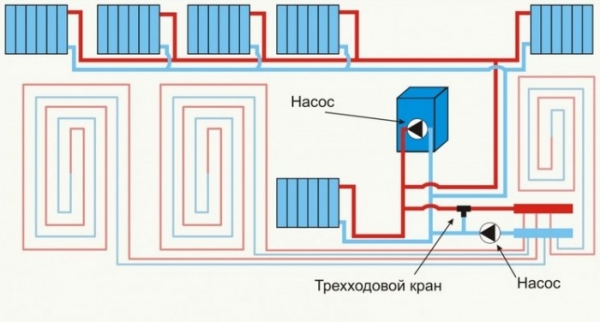
Photo 1. Diagram of a two-circuit water heating system with forced circulation and warm floors.
Single-circuit
Thanks to the single-circuit system it is possible to achieve heating only. This is the simplest and most budget option, which is suitable for small houses. The scheme consists of:
- single-circuit boiler;
- single-pipe wiring;
- atmospheric exhaust;
- radiators.
The water, heating up in the boiler, goes from one battery to another. The disadvantage is limited control coolant. When one radiator is switched off, the others automatically stop working.
This scheme can be improved by adding pump, valves, having put two-pipe wiring.
Double pipe
A two-pipe system means two pipes. Hot water flows through one, cold water through the other, warming up and heating the room, the coolant then cools down and returns to the heater.
Attention! For such a system categorically does not fit hard water from the well.
It can be equipped two single contours: the first one heats the rooms, the second one heats the liquid. This significantly reduces the load on the boiler.

For a two-story cottage it is optimal namely the two-pipe system. The single-circuit system is currently practically not used anywhere, even for heating single-story houses.
Two pipes extend from the collector where the water is collected: reverse and direct, which allows you to set a specific temperature mode and adjust it.
Warm water floor
A water floor is a network of pipes through which heated water circulates. up to 35 °C. Connection to the central system is optional. Works from a gas boiler or heat pump. Has the following qualities:
- uniform heat distribution throughout all rooms;
- you can walk on the floor barefoot even in the cold season;
- pipes hidden from prying eyes and do not disturb the aesthetics of the interior;
- warm air rises up;
- system economically consumes energy;
- no need for radiator system, you can forget about the problems associated with it;
- in winter in the rooms warm, cool in hot weather;
- affordable price.
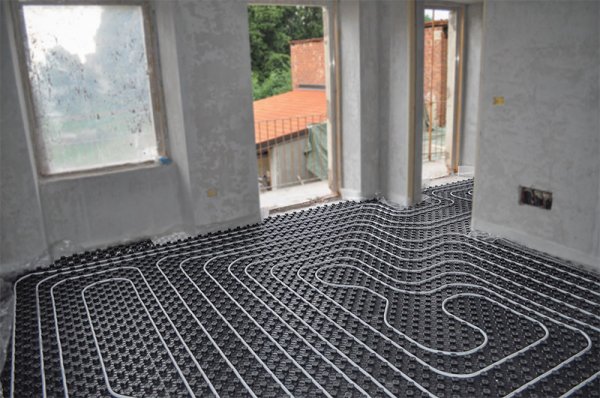
Photo 2. Underfloor heating pipes laid in a “spiral” before pouring the cement screed.
There were some downsides too. disadvantages Such heating systems include:
- Mandatory presence mixing unit and creation forced circulation.
- The inevitable reduction of overall water pressure in the central system of the house.
- After passing through the pipes of one room, the water enters another already cold. Residents can complain about lack of heat.
- installation of underfloor heating is redevelopment, which must be legalized if we are talking about an apartment or a house for several families (duplex, triplex, quadruplex). Illegal installation of the system is fraught with conflict situations with the municipality, and it does not always give permission for installation. The main reason for refusal is a decrease in water pressure in the central heating.
Despite a number of disadvantages, it is the heated floor is considered the most effective option water heating in winter. It heats the room better than any convector.
Useful video
Watch the video to learn about the basic principles and features of water heating.
How to choose the right heating system?
When choosing, everything depends on sizes at home, as well as regularity of residenceIf a family lives in a country cottage for a long period, it is most reasonable to choose a heated floor. Single-circuit the heating system is certainly the cheapest and simplest, but its functionality is limited, it is only suitable for small one-story houses, You can't heat a more spacious home this way.









Comments